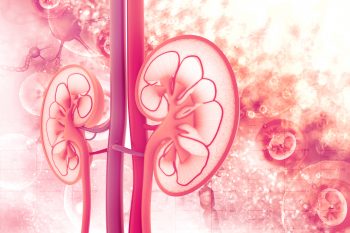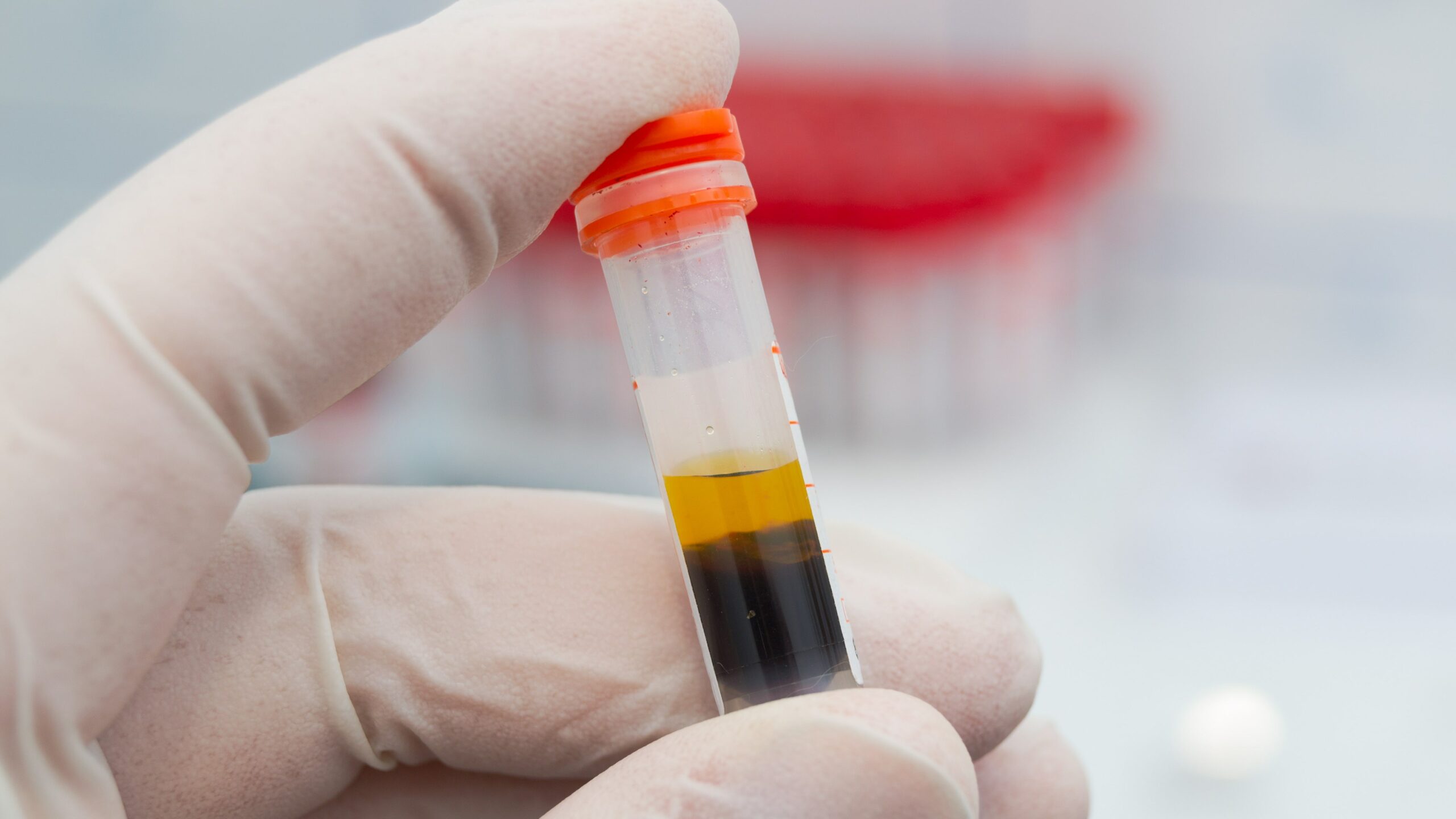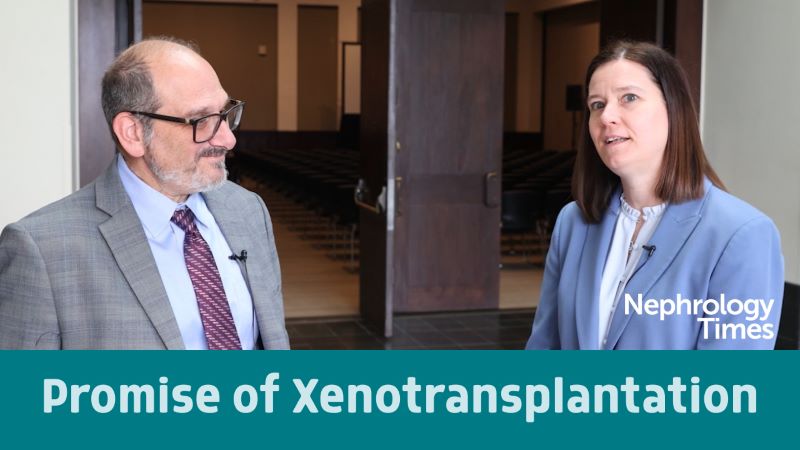
For most patients with kidney failure, the optimum treatment is kidney transplantation; preemptive or early kidney transplantation is associated with superior outcomes. Due to the scarcity of kidney donors resulting in prolonged wait times, many patients with kidney failure spend years on dialysis before receiving a kidney transplant. Consequently, recipients of kidney transplant commonly have advanced secondary or tertiary hyperparathyroidism at the time of the transplant.
In patients with advanced chronic kidney disease (CKD) and kidney failure, factors including phosphate retention, nutritional vitamin D deficiency, diminished production of 1,25-dihydrocyvitamin D, and hypocalcemia all contribute to an increase in parathyroid hormone (PTH) secretion and parathyroid gland hyperplasia (secondary hyperparathyroidism). Over time, PTH synthesis and secretion may no longer respond to negative feedback stimuli, leading to autonomous or tertiary hyperparathyroidism.
Posttransplant hyperparathyroidism is common and, according to Aileen X. Wang, MD, and colleagues, treatment practices are poorly characterized. The researchers conducted a retrospective, observational cohort study to examine the incidence, associations, and outcomes of posttransplant parathyroidectomy and calcimimetic use in a cohort of kidney transplant recipients in the United States insured with Medicare. Results were reported in the American Journal of Kidney Diseases [2023;81(3):270-280].
The study participants were identified using the US Renal Data System data to extract demographic, clinical, and prescription data from Medicare Parts A, B, and D-insured patients who received their first kidney transplant from 2007 to 2013. Patients with pretransplant parathyroidectomy were excluded. There were two study subcohorts: the parathyroidectomy subcohort (patients who underwent posttransplant parathyroidectomy) and the cinacalcet subcohort (patients who used cinacalcet after transplant).
The outcomes of interest were the incidence of and secular trends in parathyroidectomy and cinacalcet use in the 3 years following transplant and 90-day outcomes after posttransplant parathyroidectomy and initiation of cinacalcet. Posttransplant parathyroidectomy was identified by current procedural terminology codes 60500 and 60505. Cinacalcet use was identified using Medicare Part D prescription claims. Posttransplant cinacalcet use was defined as any posttransplant prescription for cinacalcet in the 6 months prior to transplant. The two outcomes were assessed independently of one another. Proportional hazards models were used to assess temporal trends and multivariable Poisson regression was used to examine pretransplant correlates of parathyroidectomy and cinacalcet use.
Study inclusion criteria were uninterrupted Medicare Parts A, B, and D coverage for at least 6 months prior to undergoing kidney transplantation and evidence of at least one Medicare claim in the 2 years prior to transplantation. A total of 30,127 kidney transplant recipients met the inclusion criteria. Of those, 10,707 had filled a prescription for cinacalcet before transplant. Pretransplant cinacalcet users were younger and more likely to be female, Black, and of longer dialysis vintage than nonusers.
Over 70,883 patient-years of follow-up, there were 551 parathyroidectomies (unadjusted incidence rate [IR], 78 [95% CI, 72-84] parathyroidectomies per 10,000 patient-years). Median time from transplant to parathyroidectomy was 13.9 months. Of the 551 parathyroidectomies (1.8% of the entire cohort), 319 were performed as inpatient procedures and 232 were performed as outpatient procedures.
Over 58,326 patient-years of follow-up, 5413 patients filled at least one prescription for cinacalcet (unadjusted IR, 928 [95% CI, 904-953] posttransplant cinacalcet users per 10,000 patient-years). Median time from transplant to first cinacalcet posttransplant prescription fill was 6.8 weeks. When posttransplant use was defined as two or more posttransplant cinacalcet prescription fills, the study identified 4458 patients over 60,807 person-years of follow-up (unadjusted IR, 733 [95% CI, 712-755] posttransplant cinacalcet users per 10,000 patient years).
There was no significant change between 2007 and 2013 in the incidence of parathyroidectomy in the 3 years after kidney transplant (trend P <.1 for all models). There was a significant increase in the use of cinacalcet (trend P <.002 for all models). The unadjusted and model 4 hazard ratios for cinacalcet use in patients who underwent transplant in 2013 (vs 2007) were 1.4 (95% CI, 1.3-1.5) and 1.2 (95% CI, 1.1-1.3), respectively.
Longer pretransplant dialysis vintage and pretransplant cinacalcet use were strongly associated with both receipt of posttransplant parathyroidectomy and cinacalcet use. The risk of parathyroidectomy and cinacalcet use was approximately 2.9- and 3.7-fold higher in patients on dialysis for 5 or more years (vs <2 years).
Of the 551 patients who underwent parathyroidectomy, 25% were hospitalized within 90 days of the procedure (IR, 12 [95% CI, 10-15] events per 10 person-years. Mean time from parathyroidectomy to hospitalization was 27 days. The most common complication was hypocalcemia-related diagnoses.
Of the 5413 patients who initiated cinacalcet, 27.7% were hospitalized within 90 days of their first posttransplant prescription fill (IR, 14 [95% CI, 13-15] events per 10 person-years). Mean time from the first posttransplant prescription fill to hospitalization was 31 days. Acute kidney injury occurred in 20.4% (IR, 9 [95% CI, 8-10] events per 10 person-years).
Key limitations cited by the authors were restricting the sample to Medicare beneficiaries; the inability to classify the type of parathyroidectomy performed; lack of laboratory data on levels of PTH, serum calcium, and serum phosphate; and the inability to compare the outcomes of patients treated with cinacalcet versus parathyroidectomy.
In summary, the researchers said, “We examined early posttransplant parathyroidectomy and cinacalcet prescription practices in a large and diverse cohort of US kidney transplant recipients. Almost 20% of our study cohort received a cinacalcet prescription (18%) or underwent parathyroidectomy (1.8%) in the first 3 years after their transplant. With ever-lengthening wait times for kidney transplantation, the frequency and severity of posttransplant hyperparathyroidism have steadily increased. Unfortunately, current management is based on rather sparce data. Prospective studies are urgently needed.”
Takeaway Points
- Researchers reported results of a study examining the incidence, associations, and outcomes of posttransplant parathyroidectomy and use of cinacalcet in US Medicare beneficiaries.
- There was no significant increase in the rate of posttransplant parathyroidectomy during the study period (2007-2013).
- There was a significant increase in the posttransplant use of cinacalcet during the study period.







 © 2025 Mashup Media, LLC, a Formedics Property. All Rights Reserved.
© 2025 Mashup Media, LLC, a Formedics Property. All Rights Reserved.